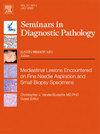The history of the microscope reflects advances in science and medicine
IF 3.5
3区 医学
Q2 MEDICAL LABORATORY TECHNOLOGY
引用次数: 0
Abstract
Microscopes, more than any other instrument, reflect advances in clinical medicine over the past several hundred years. As the primary tool of the pathologist, they were, and continue to be, a key connector between the bedside and basic sciences. One specific example is the science of clinical dermatology, which relies on clinical-pathologic correlation to make a definitive diagnosis. The microscopes used by pathologists, however, are more than scientific artifacts. Many antique microscopes are hand-crafted works of art. Even while recognizing that light microscopes may soon be obsolete as scanned slides and computer joy-sticks replace optical instruments in patient care and teaching, their significance will not be diminished. The microscope will never be forgotten in the history, art, and science of medicine, for these instruments set the social and cultural stage for modern, scientific patient care.
显微镜的历史反映了科学和医学的进步
显微镜比其他任何仪器都更能反映过去几百年来临床医学的进步。作为病理学家的主要工具,显微镜过去是、现在仍然是连接床旁和基础科学的关键纽带。临床皮肤病学就是一个具体的例子,它依赖于临床与病理的相关性来做出明确诊断。然而,病理学家使用的显微镜不仅仅是科学工艺品。许多古董显微镜都是手工制作的艺术品。虽然随着扫描切片和计算机操纵杆在患者护理和教学中取代光学仪器,光学显微镜可能很快就会被淘汰,但它们的意义并没有因此而减弱。显微镜在医学的历史、艺术和科学中永远不会被遗忘,因为这些仪器为现代科学的病人护理奠定了社会和文化基础。
本文章由计算机程序翻译,如有差异,请以英文原文为准。
求助全文
约1分钟内获得全文
求助全文
来源期刊
CiteScore
4.80
自引率
0.00%
发文量
69
审稿时长
71 days
期刊介绍:
Each issue of Seminars in Diagnostic Pathology offers current, authoritative reviews of topics in diagnostic anatomic pathology. The Seminars is of interest to pathologists, clinical investigators and physicians in practice.

 求助内容:
求助内容: 应助结果提醒方式:
应助结果提醒方式:


